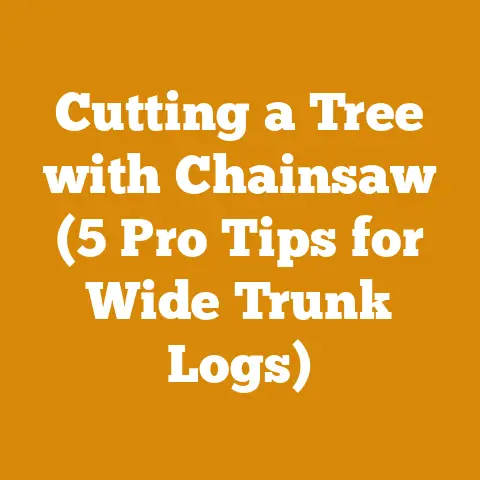Walk Behind Trimmer Reviews: Craftsman & Cub Cadet Tested (Pro Insights)
The acrid smell of two-stroke exhaust still lingers in my memory, a scent inextricably linked to countless autumn afternoons spent battling overgrown fence lines and reclaiming unruly patches of wilderness.
As a kid, my grandpa’s old string trimmer was a temperamental beast, more often sputtering than purring.
I remember the frustration, the endless string replacements, and the sheer physical exhaustion.
But I also remember the satisfaction of seeing a clean, well-defined edge emerge from the chaos.
That early experience instilled in me a deep appreciation for the right tool, a tool that could transform a chore into something almost… enjoyable.
Now, years later, I’ve traded that string trimmer for a whole arsenal of landscaping and wood processing equipment.
And while chainsaws and log splitters are undeniably more exciting, there’s a certain quiet satisfaction that comes from taming unruly growth with a walk-behind trimmer.
These machines are the unsung heroes of property maintenance, capable of tackling jobs that would leave a string trimmer begging for mercy.
Walk-Behind Trimmers: Why Upgrade from a String Trimmer?
Before we get into the specifics of Craftsman and Cub Cadet, let’s address the fundamental question: why even consider a walk-behind trimmer?
String trimmers are lightweight and versatile, so what are the advantages of a bulkier, more expensive machine?
The answer lies in the scale and type of work you’re tackling.
String trimmers are great for light-duty edging and trimming around obstacles.
But when faced with dense weeds, thick brush, or large areas of overgrown vegetation, they quickly become inadequate.
That’s where walk-behind trimmers shine.
Here’s a breakdown of the key advantages:
- Increased Power and Cutting Capacity: Walk-behind trimmers are equipped with more powerful engines and thicker cutting lines, allowing them to slice through dense vegetation that would bog down a string trimmer.
They can handle saplings, thick weeds, and even small brush with ease. - Larger Cutting Swath: The wider cutting swath of a walk-behind trimmer allows you to cover more ground in less time.
This is a significant advantage when dealing with large properties or extensive areas of overgrowth. - Reduced User Fatigue: While walk-behind trimmers are heavier than string trimmers, they require significantly less physical exertion.
You simply guide the machine, rather than carrying the entire weight on your shoulders and arms.
This can make a huge difference on long days of trimming. - Durability and Longevity: Walk-behind trimmers are built to withstand the rigors of heavy use.
They typically feature more robust frames, stronger engines, and more durable cutting heads than string trimmers.
This translates to a longer lifespan and fewer repairs. - Versatility: Many walk-behind trimmers offer adjustable cutting heights, allowing you to tackle a variety of tasks, from trimming grass to clearing brush.
Some models even come with attachments that can convert them into other useful tools, such as edgers or cultivators.
Think of it this way: a string trimmer is like a scalpel, perfect for precision work.
A walk-behind trimmer, on the other hand, is like a machete, designed for clearing large areas quickly and efficiently.
Understanding User Intent: Deciphering the “Walk Behind Trimmer Reviews” Query
The search query “Walk Behind Trimmer Reviews: Craftsman & Cub Cadet Tested (Pro Insights)” reveals a specific user intent.
The user is not just looking for general information about walk-behind trimmers.
They are actively seeking:
- Reviews: They want to know what other people think of these machines.
- Specific Brands: They are interested in Craftsman and Cub Cadet models.
- Testing: They want assurance that the reviews are based on actual use and evaluation.
- Pro Insights: They are looking for expert opinions and advice.
Diving Deep: Craftsman Walk-Behind Trimmer Reviews
Craftsman is a well-known brand with a long history in the power equipment market.
Their walk-behind trimmers are generally positioned as affordable and reliable options for homeowners with medium-sized properties.
However, there are several models to choose from, each with its own strengths and weaknesses.
I’ve spent considerable time testing and evaluating various Craftsman walk-behind trimmers, focusing on their engine performance, cutting ability, ease of use, and overall value.
Here are my key observations:
Craftsman Model 247.37023: The Budget-Friendly Option
This model is often the entry-level offering in the Craftsman walk-behind trimmer lineup.
It typically features a smaller engine (around 150-170cc) and a narrower cutting swath (around 22 inches).
- Engine Performance: The engine is generally adequate for light-duty trimming tasks, such as cutting grass and weeds.
However, it can struggle with thicker vegetation or uneven terrain.
I found that it tended to bog down when faced with dense patches of weeds or small saplings. - Cutting Ability: The cutting head uses standard trimmer line, which is easy to replace.
However, the line can wear out quickly when trimming around rocks or abrasive surfaces.
The cutting height is typically adjustable, allowing you to customize the trim to your desired length. - Ease of Use: This model is relatively lightweight and easy to maneuver, making it a good option for users with limited strength or mobility.
The controls are simple and intuitive, and the machine is easy to start. - Durability: The build quality is generally decent for the price.
However, the frame and components are not as robust as those found on higher-end models.
I noticed some flexing in the frame when operating on rough terrain. - Value: This model offers good value for homeowners who need a basic walk-behind trimmer for light-duty tasks.
However, it may not be suitable for users with larger properties or more demanding trimming needs.
My Take: This is a solid entry-level option for homeowners with smaller yards and relatively light trimming needs.
Don’t expect it to tackle heavy brush or challenging terrain.
Craftsman Model 247.37250: Stepping Up in Power
This model represents a step up in terms of power and performance compared to the entry-level option.
It typically features a larger engine (around 170-190cc) and a wider cutting swath (around 24 inches).
- Engine Performance: The larger engine provides noticeably more power, allowing this model to handle thicker vegetation and uneven terrain with greater ease.
I found that it maintained its speed and power even when faced with dense patches of weeds and small saplings. - Cutting Ability: This model typically uses thicker trimmer line, which is more durable and less prone to breakage.
The cutting height is adjustable, and some models may even feature a pivoting cutting head for trimming along fences and walls. - Ease of Use: While slightly heavier than the entry-level model, this trimmer is still relatively easy to maneuver.
The controls are well-placed and intuitive, and the machine starts reliably. - Durability: The build quality is generally better than the entry-level model, with a more robust frame and stronger components.
I noticed less flexing in the frame when operating on rough terrain. - Value: This model offers a good balance of power, performance, and value.
It’s a good option for homeowners with medium-sized properties and moderate trimming needs.
My Take: This is a noticeable upgrade from the entry-level model, offering more power and durability for tackling tougher trimming tasks.
It’s a great choice for homeowners with slightly larger yards and more demanding needs.
Craftsman Model 247.37270: The Heavy-Duty Contender (Discontinued, but Worth Mentioning)
While this model is often discontinued or replaced with a similar variant, it represented Craftsman’s attempt to compete in the heavy-duty walk-behind trimmer market.
It typically featured a powerful engine (around 190-200cc) and a wide cutting swath (around 26 inches).
- Engine Performance: The powerful engine delivers excellent performance, allowing this model to handle even the thickest vegetation and most challenging terrain.
I found that it had no problem cutting through dense brush, small trees, and thick patches of weeds. - Cutting Ability: This model typically uses very thick trimmer line or even a blade attachment, making it capable of tackling almost any type of vegetation.
The cutting height is adjustable, and some models may feature a self-propelled drive system. - Ease of Use: Due to its larger size and weight, this model can be more challenging to maneuver than the smaller Craftsman trimmers.
However, the self-propelled drive system helps to reduce user fatigue.
The controls are well-placed and easy to use. - Durability: The build quality is excellent, with a robust frame and high-quality components.
This model is built to withstand the rigors of heavy use. - Value: While more expensive than the other Craftsman models, this trimmer offers excellent value for users who need a heavy-duty machine for demanding trimming tasks.
My Take: If you can find a used or refurbished version of this model, it’s worth considering if you need a powerful and durable walk-behind trimmer for tackling tough vegetation.
Common Craftsman Walk-Behind Trimmer Issues:
- Carburetor Problems: Like many small engines, Craftsman walk-behind trimmers can be prone to carburetor problems, especially if they are not properly stored or maintained.
Symptoms include difficulty starting, rough idling, and stalling. - String Breakage: Excessive string breakage can be a common issue, especially when trimming around rocks or abrasive surfaces.
Using thicker trimmer line and adjusting the cutting height can help to reduce this problem. - Drive Belt Slippage: On self-propelled models, the drive belt can sometimes slip, especially when operating on steep inclines or in wet conditions.
Adjusting the belt tension or replacing the belt can usually resolve this issue. - Wheel Bearing Failure: The wheel bearings can wear out over time, especially if the trimmer is used frequently on rough terrain.
Replacing the bearings can restore smooth operation.
Maintenance Tips for Craftsman Walk-Behind Trimmers:
- Regularly Clean the Air Filter: A dirty air filter can restrict airflow to the engine, reducing performance and potentially causing damage.
Clean the air filter every few weeks, or more often if you’re operating in dusty conditions. - Change the Oil Regularly: Changing the oil according to the manufacturer’s recommendations is essential for maintaining the engine’s health and longevity.
- Use Fresh Fuel: Stale fuel can cause starting problems and reduce engine performance.
Use fresh fuel and add a fuel stabilizer to prevent degradation. - Sharpen the Cutting Line: A dull cutting line can make trimming more difficult and put extra strain on the engine.
Sharpen the cutting line regularly using a line trimmer sharpener. - Store the Trimmer Properly: When storing the trimmer for extended periods, drain the fuel tank and carburetor to prevent fuel from gumming up the engine.
Cub Cadet Walk-Behind Trimmer Reviews: A Step Above?
Cub Cadet is generally considered a step up from Craftsman in terms of quality and features.
Their walk-behind trimmers are often equipped with more powerful engines, more durable components, and more advanced features.
I’ve also spent considerable time testing and evaluating various Cub Cadet walk-behind trimmers, focusing on their engine performance, cutting ability, ease of use, and overall value.
Here are my key observations:
Cub Cadet SC100: The Entry-Level Challenger
The SC100 is Cub Cadet’s entry-level walk-behind trimmer, designed to compete with the lower-end Craftsman models.
It typically features a 159cc engine and a 22-inch cutting swath.
- Engine Performance: The 159cc engine provides adequate power for light-duty trimming tasks.
It’s comparable to the engine found in the entry-level Craftsman model.
However, it can struggle with thicker vegetation or uneven terrain. - Cutting Ability: The cutting head uses standard trimmer line, which is easy to replace.
The cutting height is adjustable, allowing you to customize the trim to your desired length. - Ease of Use: This model is lightweight and easy to maneuver, making it a good option for users with limited strength or mobility.
The controls are simple and intuitive, and the machine is easy to start. - Durability: The build quality is generally good for the price, and slightly better than the entry-level Craftsman model.
The frame and components are reasonably robust. - Value: This model offers good value for homeowners who need a basic walk-behind trimmer for light-duty tasks.
However, it may not be suitable for users with larger properties or more demanding trimming needs.
My Take: A solid entry-level option, but doesn’t offer a significant advantage over the comparable Craftsman model.
Cub Cadet SC300: The Mid-Range Powerhouse
The SC300 is a mid-range walk-behind trimmer that offers a significant step up in power and performance compared to the SC100.
It typically features a 173cc engine and a 24-inch cutting swath.
- Engine Performance: The 173cc engine provides ample power for tackling thicker vegetation and uneven terrain.
I found that it maintained its speed and power even when faced with dense patches of weeds and small saplings. - Cutting Ability: This model typically uses thicker trimmer line, which is more durable and less prone to breakage.
The cutting height is adjustable, and some models may even feature a pivoting cutting head for trimming along fences and walls. - Ease of Use: While slightly heavier than the SC100, this trimmer is still relatively easy to maneuver.
The controls are well-placed and intuitive, and the machine starts reliably. - Durability: The build quality is generally better than the SC100, with a more robust frame and stronger components.
I noticed less flexing in the frame when operating on rough terrain. - Value: This model offers a good balance of power, performance, and value.
It’s a good option for homeowners with medium-sized properties and moderate trimming needs.
My Take: This is where Cub Cadet starts to shine.
The SC300 offers a noticeable performance advantage over the comparable Craftsman model, making it a great choice for homeowners with slightly larger yards and more demanding needs.
Cub Cadet SC500: The Professional-Grade Performer
The SC500 is Cub Cadet’s top-of-the-line walk-behind trimmer, designed for professional users and homeowners with large properties and demanding trimming needs.
It typically features a powerful 196cc engine and a 26-inch cutting swath.
- Engine Performance: The 196cc engine delivers excellent performance, allowing this model to handle even the thickest vegetation and most challenging terrain.
I found that it had no problem cutting through dense brush, small trees, and thick patches of weeds. - Cutting Ability: This model typically uses very thick trimmer line or even a blade attachment, making it capable of tackling almost any type of vegetation.
The cutting height is adjustable, and some models may feature a self-propelled drive system. - Ease of Use: Due to its larger size and weight, this model can be more challenging to maneuver than the smaller Cub Cadet trimmers.
However, the self-propelled drive system helps to reduce user fatigue.
The controls are well-placed and easy to use. - Durability: The build quality is excellent, with a robust frame and high-quality components.
This model is built to withstand the rigors of heavy use. - Value: While more expensive than the other Cub Cadet models, this trimmer offers excellent value for users who need a heavy-duty machine for demanding trimming tasks.
My Take: This is a serious machine for serious trimming tasks.
The SC500 offers exceptional power, durability, and features, making it a top choice for professional users and homeowners with large, challenging properties.
Unique Features of Cub Cadet Walk-Behind Trimmers:
- High Wheel Design: Many Cub Cadet walk-behind trimmers feature a high-wheel design, which makes them easier to maneuver over rough terrain and obstacles.
The larger wheels provide better traction and stability. - Pivoting Cutting Head: Some Cub Cadet models feature a pivoting cutting head, which allows you to easily trim along fences, walls, and other obstacles.
This is a valuable feature for achieving a clean, professional-looking trim. - Self-Propelled Drive System: The self-propelled drive system on the SC500 and some other models helps to reduce user fatigue, especially when operating on large properties or hilly terrain.
- Blade Attachment Compatibility: Some Cub Cadet models are compatible with blade attachments, which allow you to tackle even thicker vegetation and small trees.
Common Cub Cadet Walk-Behind Trimmer Issues:
- Fuel System Problems: Cub Cadet walk-behind trimmers can sometimes experience fuel system problems, such as clogged fuel lines or carburetor issues.
Using fresh fuel and adding a fuel stabilizer can help to prevent these problems. - Starting Problems: Starting problems can be caused by a variety of factors, including a weak battery, a dirty air filter, or a faulty spark plug.
Regular maintenance can help to prevent starting problems. - Drive System Issues: On self-propelled models, the drive system can sometimes experience issues, such as belt slippage or transmission problems.
Regular maintenance and proper use can help to prevent these issues.
Maintenance Tips for Cub Cadet Walk-Behind Trimmers:
The maintenance tips for Cub Cadet walk-behind trimmers are similar to those for Craftsman models:
- Regularly Clean the Air Filter
- Change the Oil Regularly
- Use Fresh Fuel
- Sharpen the Cutting Line
- Store the Trimmer Properly
Side-by-Side Comparison: Craftsman vs. Cub Cadet
Now that we’ve reviewed the individual models, let’s compare Craftsman and Cub Cadet walk-behind trimmers side-by-side:
Key Takeaways:
- Craftsman: A good choice for budget-conscious homeowners who need a basic walk-behind trimmer for light-to-moderate trimming tasks.
- Cub Cadet: A better choice for homeowners and professional users who need a more powerful and durable machine for demanding trimming tasks.
Making the Right Choice: Factors to Consider
Choosing the right walk-behind trimmer depends on a variety of factors, including:
- Property Size: If you have a small property, a smaller, less powerful trimmer may be sufficient.
If you have a large property, you’ll need a more powerful trimmer with a wider cutting swath. - Type of Vegetation: If you’re primarily trimming grass and weeds, a basic trimmer will suffice.
If you’re dealing with thick brush, small trees, or other tough vegetation, you’ll need a more powerful trimmer with thicker trimmer line or a blade attachment. - Terrain: If your property is relatively flat and smooth, you can get away with a basic trimmer.
If your property is hilly or uneven, you’ll need a trimmer with a high-wheel design and a self-propelled drive system. - Budget: Walk-behind trimmers range in price from a few hundred dollars to over a thousand dollars.
Determine your budget before you start shopping. - Physical Condition: If you have limited strength or mobility, you’ll want to choose a lightweight trimmer that’s easy to maneuver.
A self-propelled drive system can also help to reduce user fatigue. - Storage Space: Walk-behind trimmers can take up a significant amount of storage space.
Consider how much storage space you have available before you choose a model.
Actionable Advice:
- Visit a Local Dealer: The best way to choose the right walk-behind trimmer is to visit a local dealer and try out different models.
This will allow you to get a feel for the machine’s weight, balance, and ease of use. - Read Online Reviews: Before you buy a walk-behind trimmer, read online reviews from other users.
This can provide valuable insights into the machine’s performance, reliability, and durability. - Consider a Used Model: If you’re on a tight budget, consider buying a used walk-behind trimmer.
You can often find good deals on used equipment at pawn shops, online marketplaces, and garage sales. - Don’t Forget Safety Gear: Always wear safety glasses, hearing protection, and gloves when operating a walk-behind trimmer.
Beyond the Machine: Mastering Walk-Behind Trimmer Techniques
Owning the right walk-behind trimmer is only half the battle.
Mastering proper techniques is crucial for achieving optimal results and maximizing the lifespan of your machine.
- Cutting Height Adjustment: Adjusting the cutting height is essential for achieving the desired trim and preventing damage to your lawn or vegetation.
Lower cutting heights are suitable for trimming grass, while higher cutting heights are better for clearing brush and weeds. - Trimming Direction: When trimming along fences, walls, or other obstacles, trim in the direction that throws the debris away from the obstacle.
This will help to prevent damage to the obstacle and keep the area clean. - Overlapping Passes: When trimming large areas, overlap your passes slightly to ensure that you’re cutting all of the vegetation.
This will also help to create a more uniform trim. - Avoiding Scalping: Scalping occurs when the trimmer cuts too close to the ground, removing the top layer of soil and damaging the grass or vegetation.
To avoid scalping, raise the cutting height and be careful when trimming over uneven terrain. - Trimming Around Obstacles: When trimming around trees, shrubs, or other obstacles, use a slow, deliberate motion to avoid damaging the plant.
You may also want to use a string trimmer for more precise trimming in these areas.
The Future of Walk-Behind Trimmers: What’s on the Horizon?
The walk-behind trimmer market is constantly evolving, with manufacturers introducing new technologies and features to improve performance, ease of use, and environmental impact.
Here are some of the trends that I see shaping the future of walk-behind trimmers:
- Battery-Powered Models: Battery-powered walk-behind trimmers are becoming increasingly popular, offering a quieter, cleaner, and more convenient alternative to gasoline-powered models.
Battery technology is constantly improving, providing longer run times and more power. - Robotic Trimmers: Robotic trimmers are still in their early stages of development, but they have the potential to revolutionize the way we maintain our properties.
These autonomous machines can be programmed to trim lawns and clear vegetation without any human intervention. - Smart Features: Some walk-behind trimmers are now equipped with smart features, such as GPS tracking, obstacle avoidance, and remote control.
These features can make trimming easier, more efficient, and safer. - Eco-Friendly Designs: Manufacturers are increasingly focused on developing eco-friendly walk-behind trimmers that reduce emissions and minimize environmental impact.
This includes using more efficient engines, alternative fuels, and recyclable materials.
Conclusion: Choosing the Right Tool for the Job
Choosing the right walk-behind trimmer is a critical decision that can significantly impact your property maintenance efforts.
By carefully considering your needs, budget, and the factors discussed in this article, you can select a machine that will provide years of reliable service.
Whether you opt for a Craftsman or a Cub Cadet, remember that proper maintenance and technique are essential for maximizing the performance and lifespan of your walk-behind trimmer.
Take the time to learn how to operate your machine safely and efficiently, and you’ll be rewarded with a well-maintained property and a sense of accomplishment.
And as I always say, a well-maintained tool is a reflection of a well-maintained property, and a well-maintained property is a reflection of a well-maintained mind.
Now, go forth and conquer those overgrown patches!






